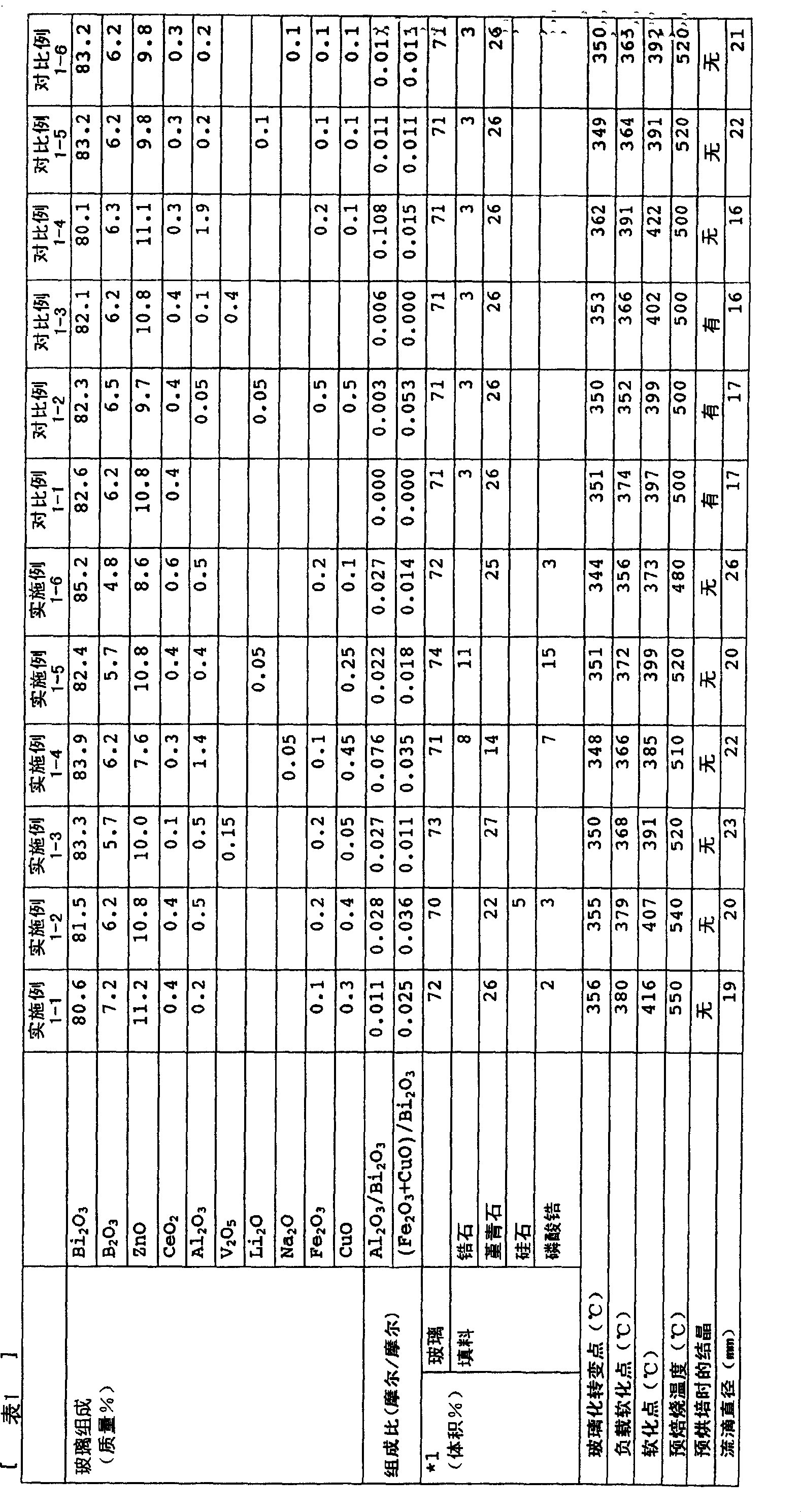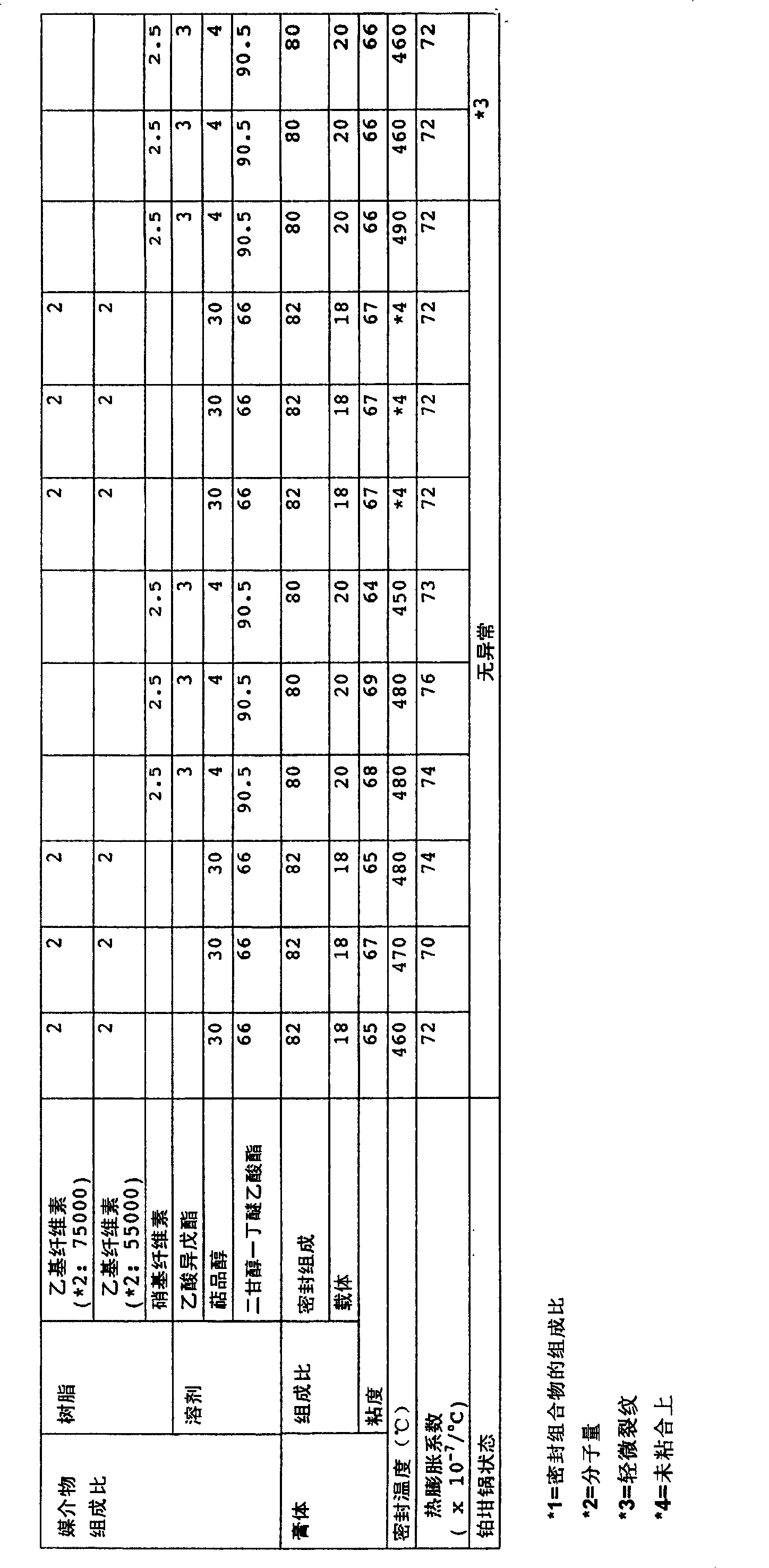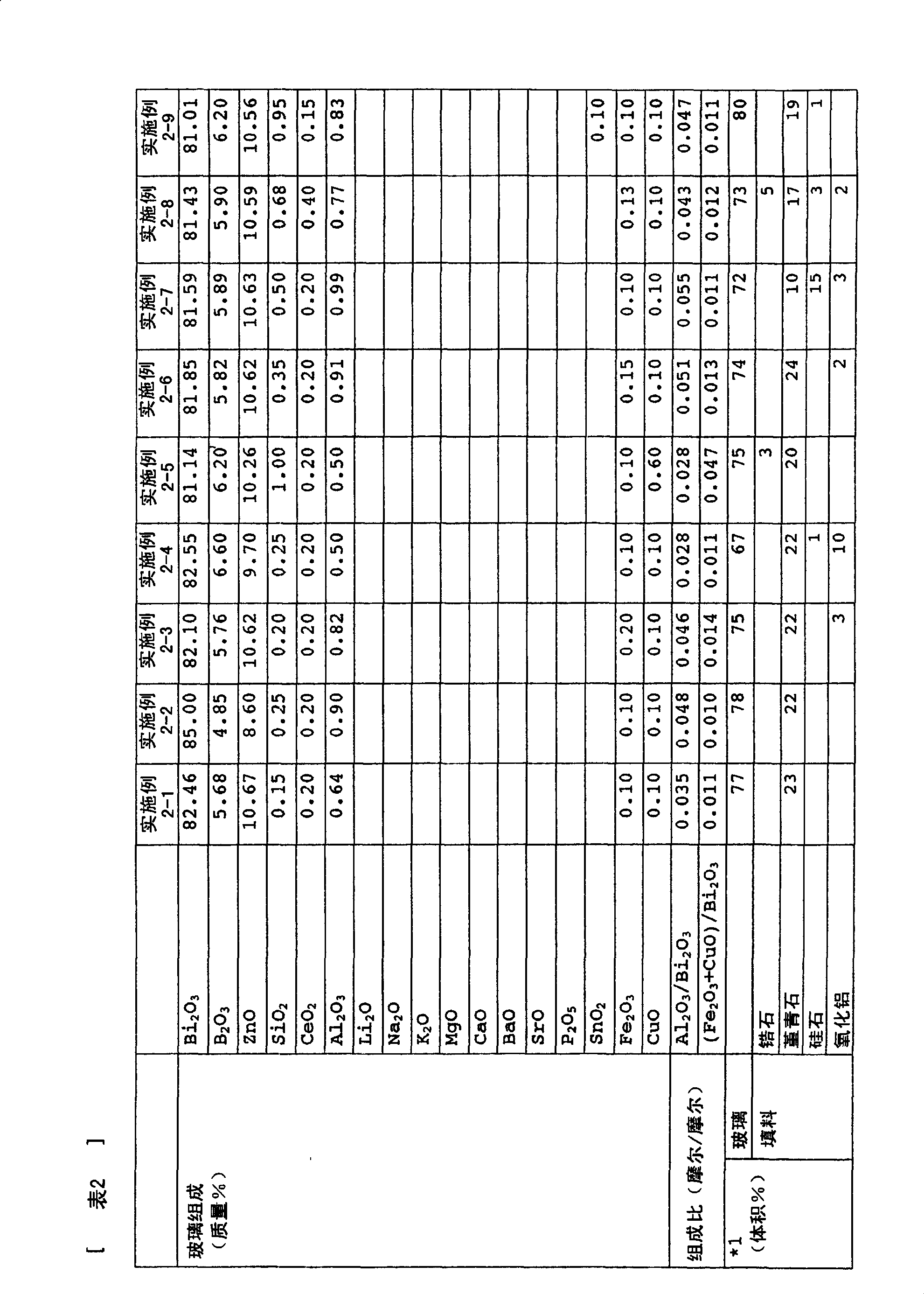Low melting glass, sealing composition and sealing paste
A technology of low melting point glass and sealing composition, applied in the field of sealing composition and sealing paste, and low melting point glass, can solve the problems of low sealing strength, increased bubbles, inability to seal bismuth glass, etc., and achieve the effect of inhibiting corrosion and stable operation
- Summary
- Abstract
- Description
- Claims
- Application Information
AI Technical Summary
Problems solved by technology
Method used
Image
Examples
Embodiment 1-1
[0064] As shown in Table 1, the raw material was prepared with 80.6% Bi 2 o 3 , 7.2% B 2 o 3 , 11.2% ZnO, 0.4% CeO 2 , 0.2% Al 2 o 3 , 0.1% Fe 2 o 3 and 0.3% of CuO were mixed to prepare a batch. The ingredients were placed in platinum crucibles, which were then melted in a furnace adjusted to 1100°C for 50 minutes. The molten glass was formed into a flake shape with a water-cooled drum, pulverized with a ball mill, and passed through a 150-mesh screen to obtain a low-melting glass.
[0065] Al of the low-melting glass 2 o 3 / Bi 2 o 3 Molar ratio is 0.46 / 40.92, namely 0.011, (Fe 2 o 3 +CuO) / Bi 2 o 3 The molar ratio of is (0.15+0.89) / 40.92, which is 0.025.
[0066] A sealing composition was prepared by adding 26 vol % cordierite and 2 vol % zirconium phosphate as a refractory ceramic filler to 72 vol % low melting point glass. The glass transition point, load softening point, and softening point of the sealing composition were measured with a differential ther...
Embodiment 1-2 to 1-6
[0077] Examples 1-2 to 1-6 Sealing compositions were prepared in the same manner as in Example 1-1.
[0078] The method of Example 1-1 was repeated for melting the glass, except that the raw materials were blended as shown in Table 1 to prepare the batch. The molten glass was formed into flakes with a water-cooled drum, pulverized with a ball mill, and passed through a 150-mesh screen to obtain low-melting glass.
[0079] Al of the above-mentioned low melting point glass 2 o 3 / Bi 2 o 3 The molar ratio is 0.022-0.076, (CuO+Fe 2 o 3 ) / Bi 2 o 3 The molar ratio is 0.011-0.036. When the sealing composition mixed with the low-melting glass and the refractory ceramic filler was fired at a pre-firing temperature of 480-540°C, no crystal deposition was observed in any of the glasses. Also, since the low-melting glass has a load softening point of 356-379°C, even a sealing composition obtained by mixing with a refractory ceramic filler can sufficiently flow at a temperature of...
Embodiment 2-1
[0099] As shown in Table 2, the feedstock was prepared with 82.46% Bi 2 o 3 , 5.68% B 2 o 3 , 10.67% ZnO, 0.15% SiO 2 , 0.2% CeO 2 , 0.64% Al 2 o 3 , 0.10% Fe 2 o 3 and 0.10% of CuO were mixed to prepare the batch. The ingredients were placed in platinum crucibles, which were then melted in a furnace adjusted to 1100°C for 50 minutes. In addition, the molten glass was shaped into flakes with a water-cooled drum, pulverized with a ball mill, and passed through a 150-mesh screen to obtain a low-melting glass.
[0100] Al of the low-melting glass 2 o 3 / Bi 2 o 3 The molar ratio was set to 0.035, (Fe 2 o 3 +CuO) / Bi 2 o 3 The molar ratio was set to 0.011, B 2 o 3 The molar ratio of / ZnO was set to 0.62.
[0101] The sealing composition was prepared by adding 23 volume percent cordierite as a refractory ceramic filler to 77 volume percent low melting glass. The specific surface area of the cordierite is 3m 2 / g or less. The glass transition point, load softe...
PUM
| Property | Measurement | Unit |
|---|---|---|
| Glass transition point | aaaaa | aaaaa |
| Softening point | aaaaa | aaaaa |
| Viscosity | aaaaa | aaaaa |
Abstract
Description
Claims
Application Information
 Login to view more
Login to view more - R&D Engineer
- R&D Manager
- IP Professional
- Industry Leading Data Capabilities
- Powerful AI technology
- Patent DNA Extraction
Browse by: Latest US Patents, China's latest patents, Technical Efficacy Thesaurus, Application Domain, Technology Topic.
© 2024 PatSnap. All rights reserved.Legal|Privacy policy|Modern Slavery Act Transparency Statement|Sitemap



